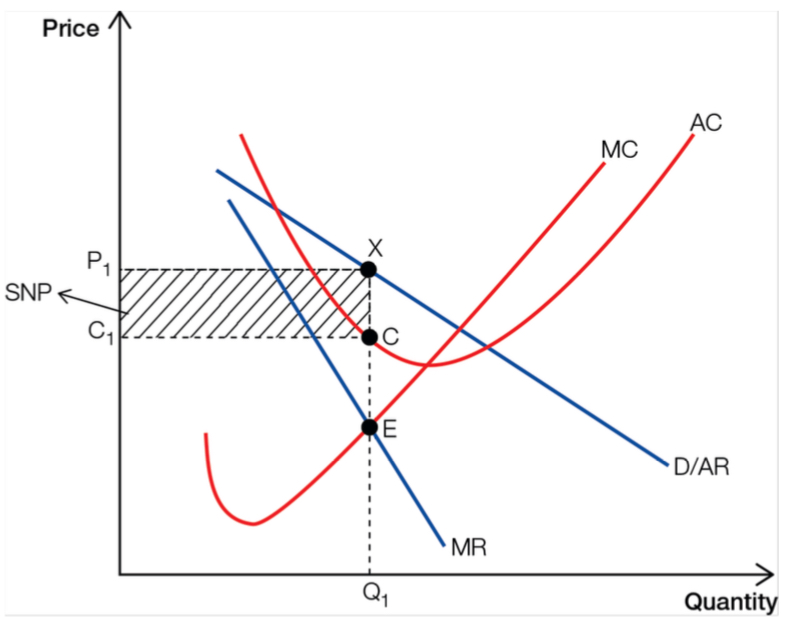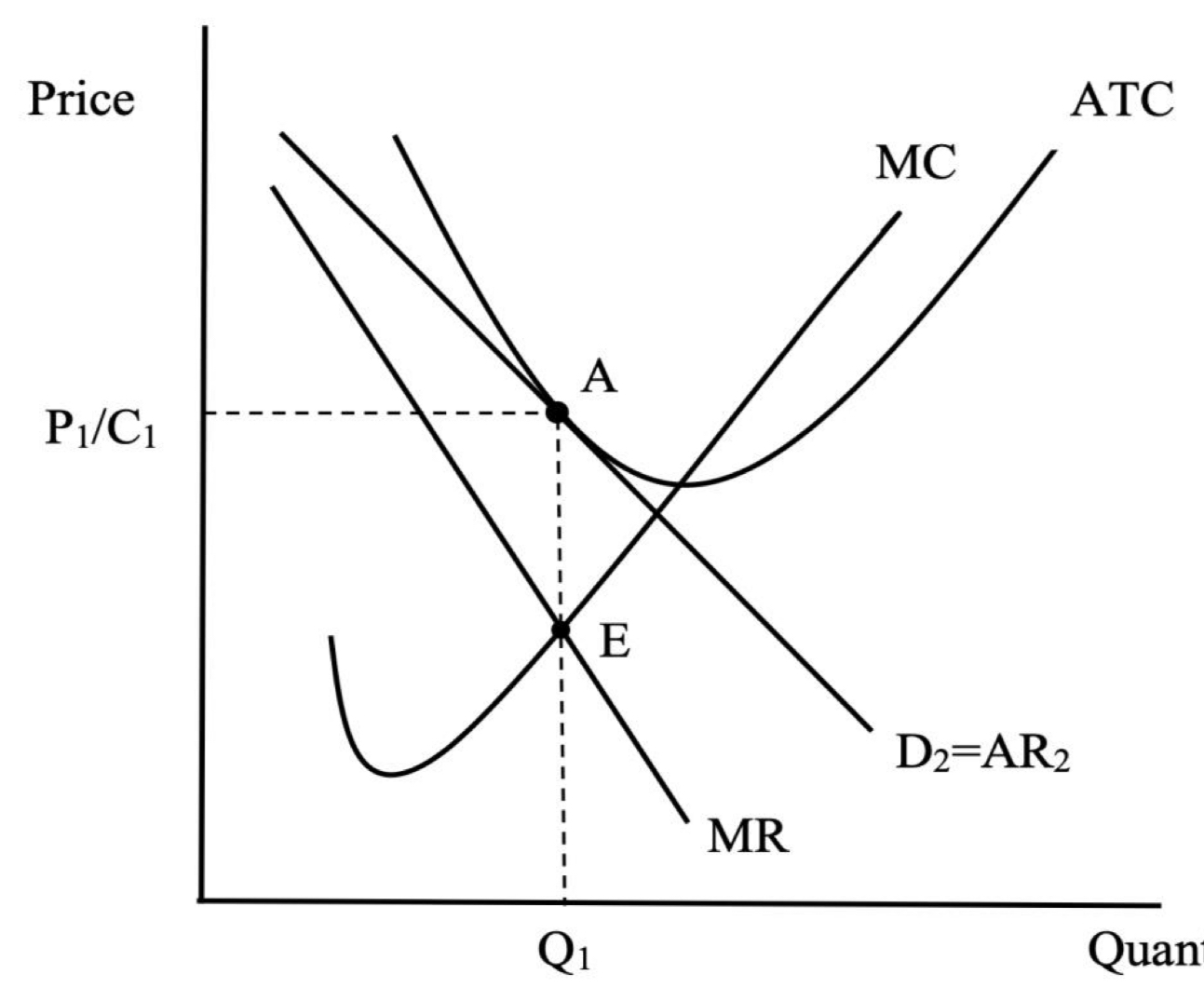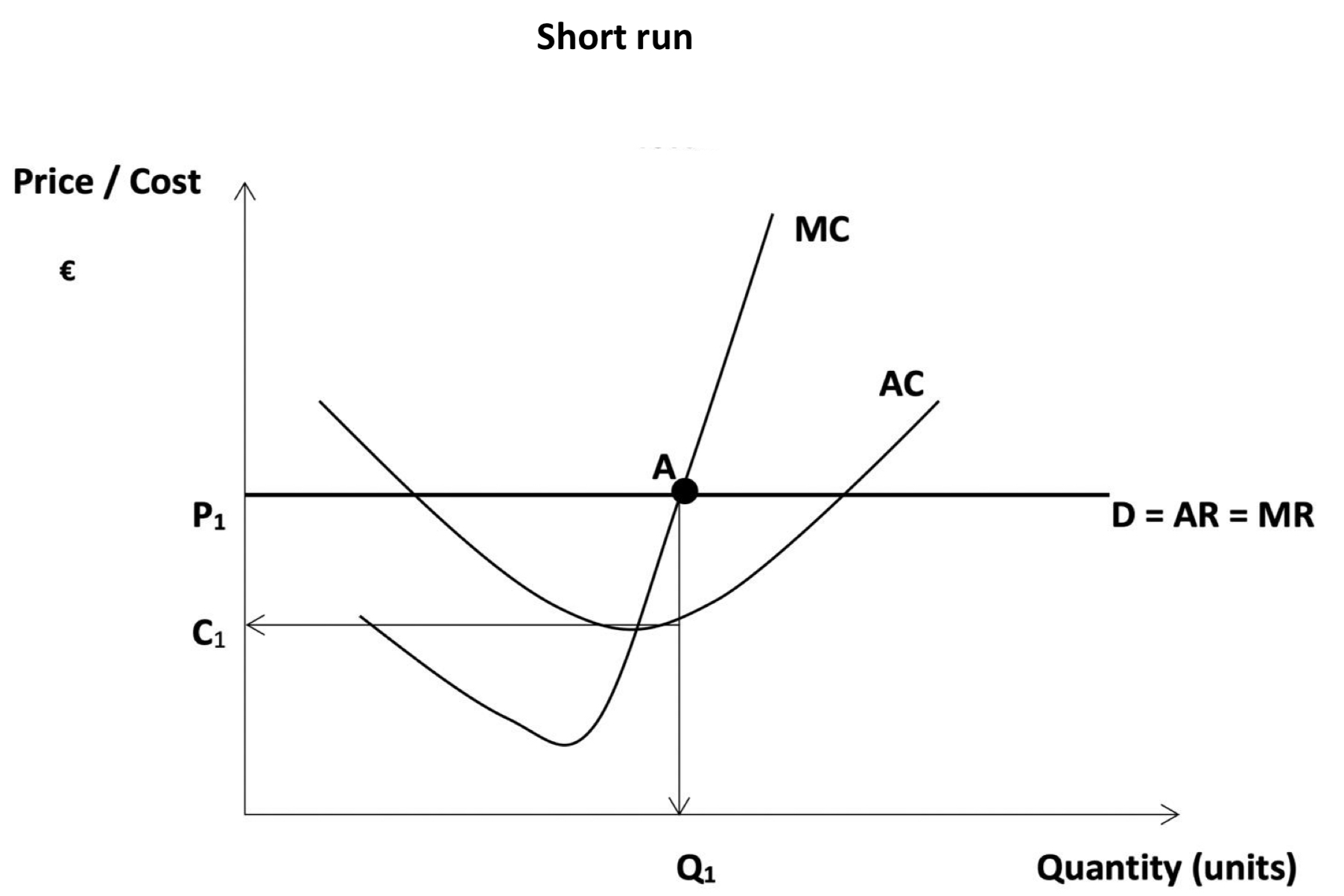Market Structures(3.1) - Imperfect/Monopolistic Competition and Perfect Competition
1/24
There's no tags or description
Looks like no tags are added yet.
Name | Mastery | Learn | Test | Matching | Spaced |
|---|
No study sessions yet.
25 Terms
Monopolistic Competition
A market structure where there are many firms, differentiated products and few barriers to entry
Advantages of Monopolistic/Imperfect Competition
Greater Choice: Goods are not homogeneous, but are close substitutes, therefore consumers have greater choice of goods/services.
Normal Profit: In the long run consumers are not being exploited as the firm is earning normal profits.
Lower Prices: Competition between firms in the industry will help lower prices and make them more competitive for consumers.
Innovative Goods/Services: Innovation is encouraged as firms will want to differentiate against competitors.
Disadvantages of Imperfect/Monopolistic Competition
Inefficient: An imperfect competition firm does not produce at the most efficient point on its AC curve as they spend resources on forms of product differentiating such as advertising.
Excess Capacity: Firms in monopolistic competition produce below their optimal production level, meaning they are not fully utilising their resources.
Monopoly Power: Price exceeds the marginal cost of production. The extent of this difference represents the degree of monopolistic power the firm is able to exert in the market for its differentiated product.
Why are imperfect/monopolistic firms not socially efficient?
Not producing at the lowest cost per unit - wasting resources
Higher production costs leads to higher prices for consumers
Product Differentiation
A strategy where a company makes its product distinct from competitors products by tactics such as; emphasising unique features, design, quality, branding. This helps the product stand out and thus attract more customers.
Forms of product differentiation
Branding
Product Innovation
Competitive Advertising
Imperfect competition is considered wasteful of resources. Why?
Inefficient use of resources: Due to product differentiation, firms are are not producing where their average cost is at a minimum.
Competitive advertising: cost of advertising is pushed onto consumers
Disadvantages of Advertising for the Consumer
Increased Prices: cost of advertising for firms is pushed onto consumers in the form of higher prices.
Misleading Information: Consumers may receive false or inaccurate information leading to confusion.
Unnecessary Polution: Consumers may have to pay for the removal of litter caused by advertising e.g. leaflets discarded.
Imperfect/Monopolistic Competition in the short run
Supernormal Profits: The firm is earning SNP’s because average Revenue exceeds Average Costs (AR > AC)
Price: The firm produces at Q1 and sells this output at P1
Equilibrium: shown at point E where Marginal Cost = Marginal Revenue (MC = MR) and Marginal Cost is rising (MC cuts MR from below)
Costs: shown at C1
Scarcity: The firm is not making efficient use of scarce resources because they don’t produce at the lowest point on the Average Cost(AC) curve.


Long Run Cost curve of monopolistic Competition
Super Normal Profits: The firm is NOT earning SNP’s. It is earning Normal Profit because Average Revenue equals average cost(AR = AC)
Price: The firm produces at Q1 and sells this output at P1
Equilibrium: Shown at point E where Marginal Costs equals Marginal Revenue (MC=MR) and Marginal Costs is rising (MC cuts MR from Below)
Costs: shown at point C1
Scarcity: The firm is not making efficient use of resources as they are not producing at the lowest point on the Average Cost Curve.
Perfectly Competitive Market
A market where identical goods are provided by a large amount of small sellers who are price takers to a large number of buyers.
Assumptions underlying Perfect Competition
There are many buyers in the industry
There are many sellers in the industry
Homogenous goods are sold
Freedom of entry/exit due to lack of barriers to entry or exit.
Perfect knowledge of profits and prices exists
Each firm attempts to maximise profits.
Why don’t firms in perfect competition advertise?
They sell Homogenous goods
The increase in cost comes with very little revenue
Benefits the entire industry
Advantages of Perfect Competition
Efficient: The firm produces at the lowest point on the average cost curve meaning there is no waste of scarce resources.
Low prices: The firm usually sells its products at the lowest possible cost for consumers meaning there is no exploitation of consumers.
No Advertising: As goods are Homogenous, there is no need for wasteful advertising. This keeps the cost of production low.
Price Taker: Each firm must accept the price given by the market. This keeps the price low for consumers.
Disadvantages of Perfect Competition
No scope for Economies of Scale: Firms do no produce at a large enough output to benefit from economies of scale.
Little Choice: Goods are all identical, so consumers do not have a wide variety of goods to choose from.
No R&D incentive to expand: Firms may not have the sufficient funds to expand as they are making Normal Profits.
Perfect Competition in the short run
Super Normal Profit: firms earn supernormal profit because Average Revenue exceeds Average Costs (AR > AC)
Price: The firm produces at Q1 and sells this output at P1.
Equilibrium: Occurs at point A where Marginal Costs equal Marginal Revenue (MC=MR) and Marginal cost is rising (MC cuts MR from below)
Costs: shown at point C1
Scarcity: The firm is not making efficient use of resources because they don’t produce at the lowest point on the Average Cost (AC) curve.

Impact of entry of new firms on the equilibrium position of the Firm
Market Supply curve shifts out to the right as more firms enter the industry.
This causes the market price to fall.
The individual firm’s Demand curve falls, which forces the firm to lower its price (Perfectly Competitive firms are price takers)
Firm will now produce a smaller quantity.
Amount of SNP’s earned will continue to fall until they are eliminated.

Long run equilibrium of a perfectly competitive firm
Super Normal Profit: Firms do not earn SNP’s. They earn normal profit because average revenue equals average cost (AR = AC)
Price: Firm produces at Q2 and sells output at P2
Equilibrium: occurs at point A where Marginal costs are equal to Marginal Revenue and Marginal Cost is rising (MC cuts MR from below)
Costs: shown at point A
Scarcity: The firm is not making efficient use of scarce resources because they don’t produce at the lowest point on the AC curve.
Market Concentration
The degree to which a small number of firms make up the total output in the Market.
The four firm concentration ratio
Measures the market share of the 4 biggest firms in the market
What concentration values mean
Below 50 - low market concentration - monopolistic competition
50-80 - medium concentration - Oligopoly
Above 80 - high market competition- Oligopoly or Monopoly
How to measure a four firm Concentration ratio.
Add production of top four firms and put it over aggregate production to get the ratio/%
Herfindahl-Hirschman Index (HHI)
Measures the size of firms in relation to the entire industry and shows the extent of competition between them.
How to calculate an HHI index
Square the percentage market share for each firm then add them up.
What different HHI values mean
0 - 1,500: A competitive market
1,500-2,500: A moderately Concentrated Market
Above 2,500: A highly concentrated market